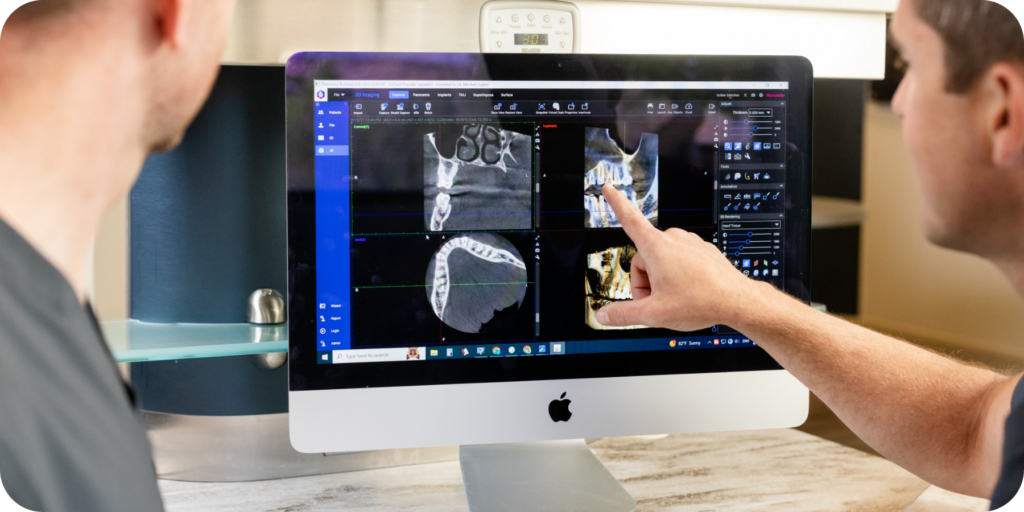
Bone grafts provide the framework and ability for your own bone to grow in areas where it has been lost due to periodontal disease or missing teeth. Bone grafts make difficult implant cases possible and can help restore the look of your smile.
Why is Bone Grafting Necessary?
If you have missing teeth or have been diagnosed with periodontal disease, you may also have some bone loss. After teeth have been extracted, the formerly healthy jaw bone atrophies because it is no longer holding teeth roots in place. The tartar and bacteria involved in periodontal disease also causes bone loss that eventually leads to loosening teeth.
Bone grafting can prevent bone loss caused by periodontal disease from worsening. Another common reason for needing a bone graft is in preparation for an implant. If the jawbone is too thin or too shallow due to bone loss, the implant will not be adequately supported. implants need to be fully surrounded by healthy bone, and away from the nerves and sinuses. Bone grafting makes implants in areas of bone loss and atrophy possible.
What Happens Before, During and After Bone Grafting
The bone grafting procedure can help restore strength and a natural look to your jawbone. In many cases bone grafting is essential to improving oral health, increasing the longevity of your teeth, and for implant placement. We aim to put you at ease and to make your procedure as comfortable as possible.
Before
During your consultation one of our doctors may use 3D imaging to asses the amount of healthy bone that you have, to determine if bone grafting is necessary. A treatment plan will be designed to fit your needs and the procedure will be explained to you.
During
Your comfort is important to us. The area will be completely numbed using local anesthesia. IV sedation is also available. The bone graft is placed through a small incision in your gums and sutured in place. Each situation is different but most bone grafting procedures take between 30 and 60 minutes.
After
Some post operative pain is normal. Some medications and home care may be prescribed to promote healing and to manage any discomfort. After the bone graft has healed, the implant placement process can begin.
Benefits of Bone Grafting
Bone grafting can help turn back time to restore your jawbone after disease, trauma, and time have left it atrophied and damaged. The small amount of donor bone placed provides the framework needed for your body to develop a fuller, stronger jawbone to support your natural teeth and dental implants. Bone grafting not only repairs damage but also prevents it. A bone graft may be recommended during a tooth extraction in order to increase full healing time, prevent atrophy and to make a future dental implant not only possible, but to speed up the process.
Life After Bone Grafting
- Stronger Jawbone
- Possibility for Dental Implants
- Restored Aesthetics
- More Stable Tooth Roots
- Reversal of Damage Due to Disease or Trauma